Diary Segment
Why Use This Function:
The Diary segment offers the ability to access and manage the Patients' information all from one screen. From the time a booking is made, the Patient arrives at the Practice and after the Patient has consulted with a Practitioner. The Diary segment is the most versatile segment in the GoodX Web App. An Electronic Diary allows you to manage the workflow at the Practice as well as the Practitioner's time. An Electronic Diary keeps a record of all bookings, transactions, and events that happen daily, by means of time slots. For example, you will be able to access the Theatre Manager, Dashboard, Patient Identifier, and Clinical Reports from the Diary segment.The Diary segment forms part of the Navigation Wheel. For more information regarding the functionality of the Navigation Wheel, please refer to the user manual: Navigation Wheel.
💡Please Note: This is the default set-up of the segment and the Navigation Bar items can be customised to the needs and preferences of the Practice. For more information regarding the customisation of the segment please refer to the user manuals: General Settings and Navigation (Wheel) Settings.
The Contents of This User Manual:
- Diary
- Theatre Manager
- Dashboard
- Patient Identifier
- Clinical Reports
- Hospital Round Management
- Inbox
- This user manual will start on the Navigation Bar.
![]()
- Click on the Navigation Wheel.

- The Navigation Wheel will expand.
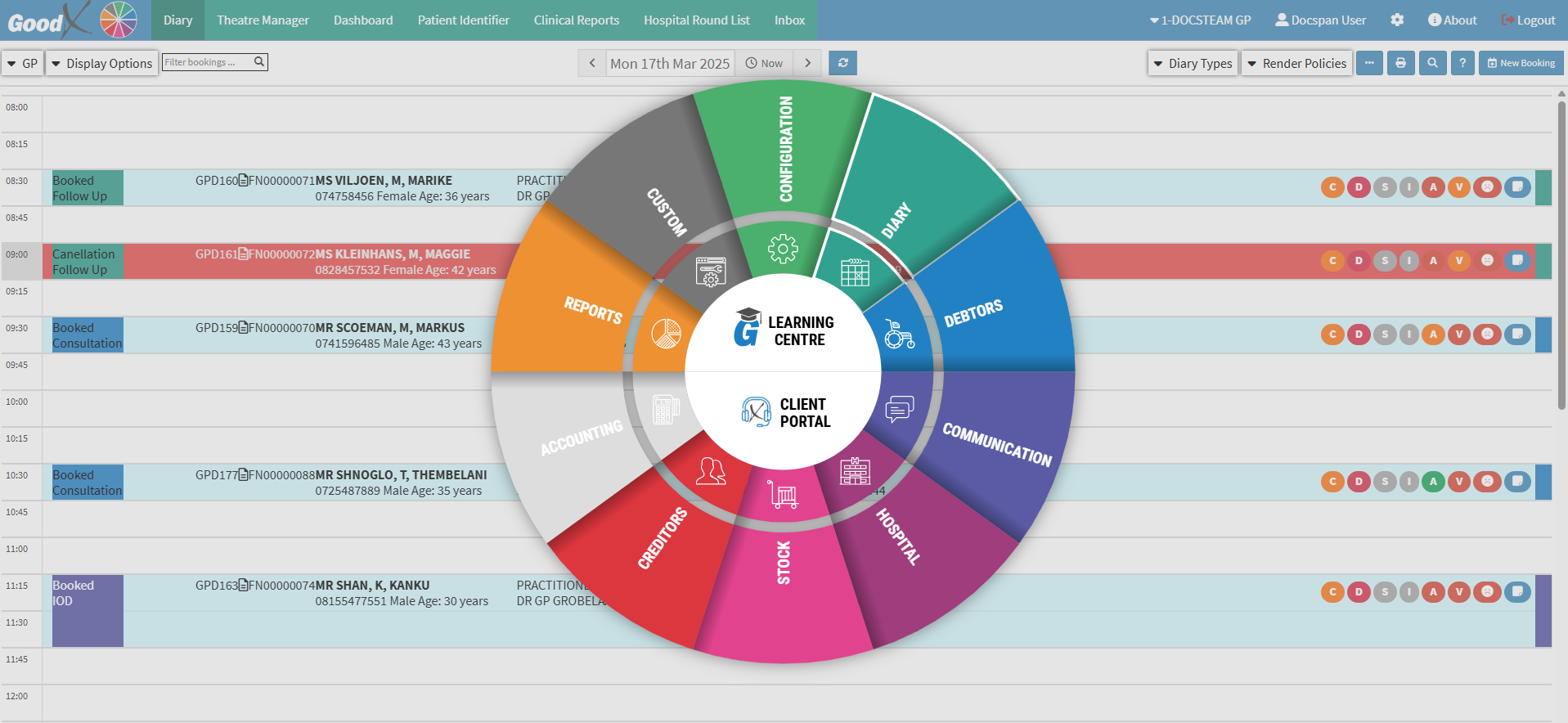
- Click on the Diary segment.
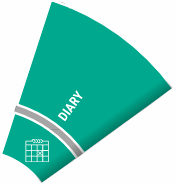
- The Diary screen will open.
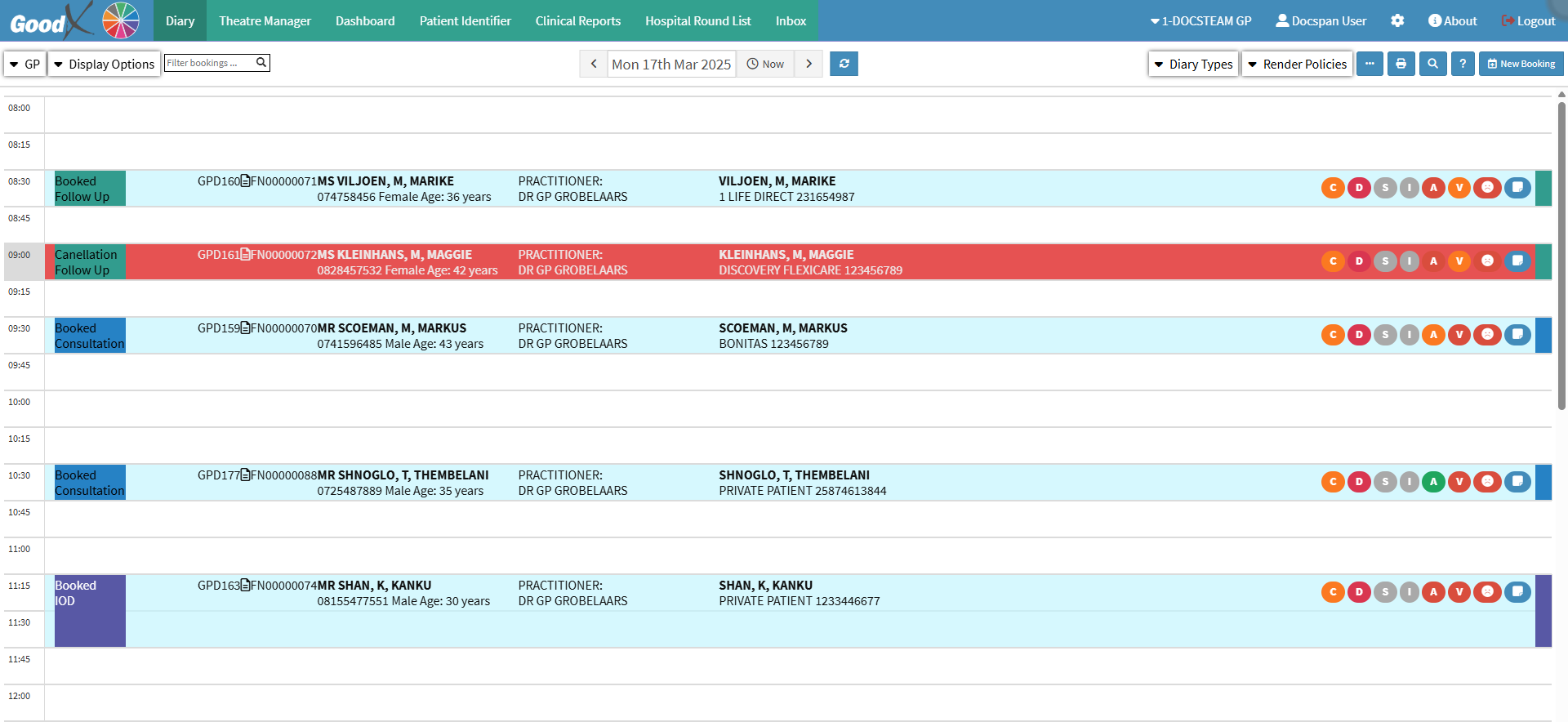
- An explanation will be given for each tab available on the Diary Navigation Bar:
Diary
An Electronic Diary allows you to manage the Practice and the Practitioner's time, as well as manage Patients. An Electronic Diary keeps a record of all bookings, transactions, and events that happen daily, by means of time slots. - Click on the Diary tab.
- The Diary screen will open.
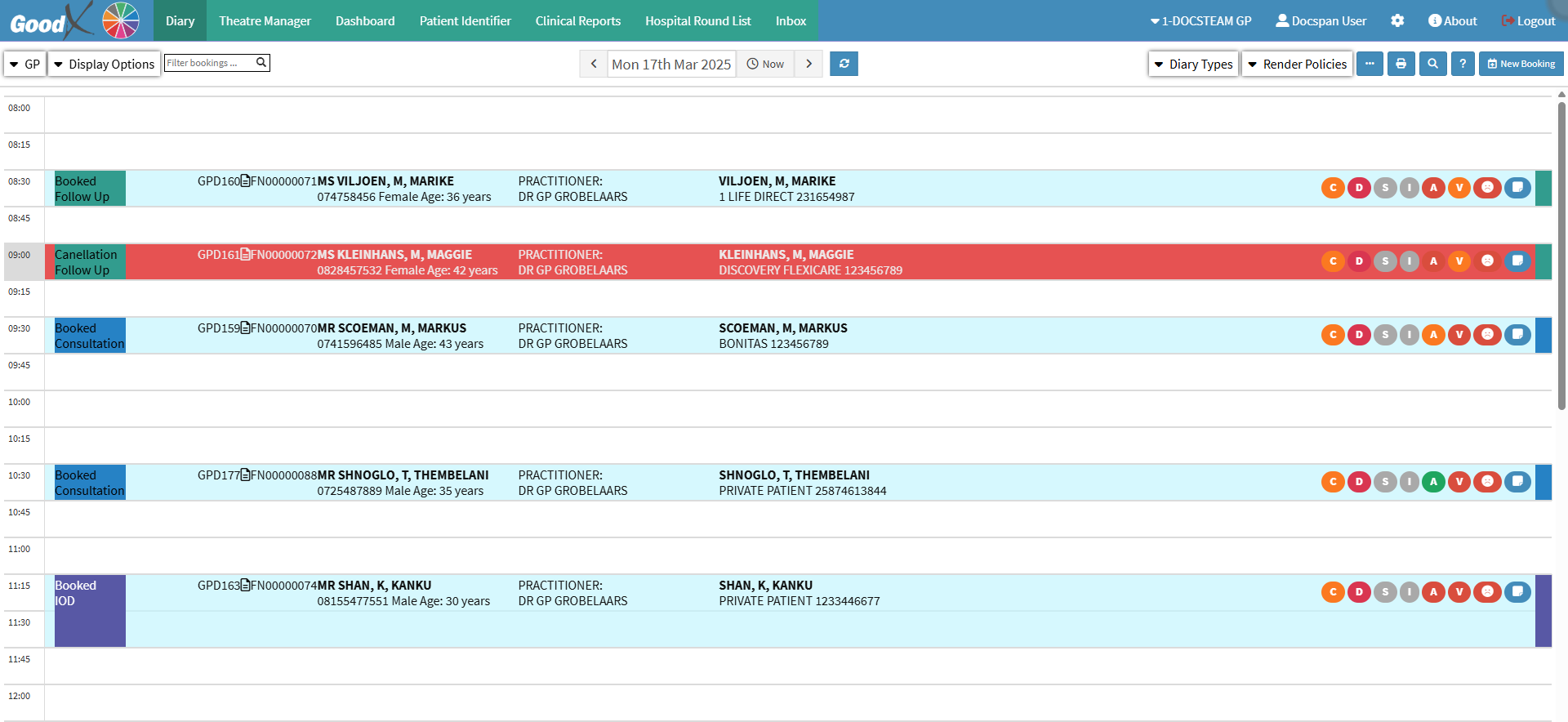
- For an extensive explanation of the Diary screen, please refer to the user manual: The Diary Screen.
Theatre Manager
The Theatre Manager will assist the Practice in managing their Theatre bookings. The bookings can be made on the diary and you will be able to print or download the theatre list from these bookings. The Practitioner can either keep the theatre bookings on a separate diary or block out the times for Theatre in their current daily diary.- Click on the Theatre Manager tab.
![]()
- The Theatre List screen will open.

- For an extensive explanation of the Theatre Manager, please refer to the user manual: Theatre Manager: Navigation and Use.
Dashboard
An overview of the statistics of all the reports that are available for the Practice or Practitioner. The Dashboard can automatically generate graphs and charts based on various metrics, such as past and future bookings, cash flow, turnover reports, code breakdowns, and booking statuses.- Click on the Dashboard tab.
![]()
- The Dashboard screen will open.
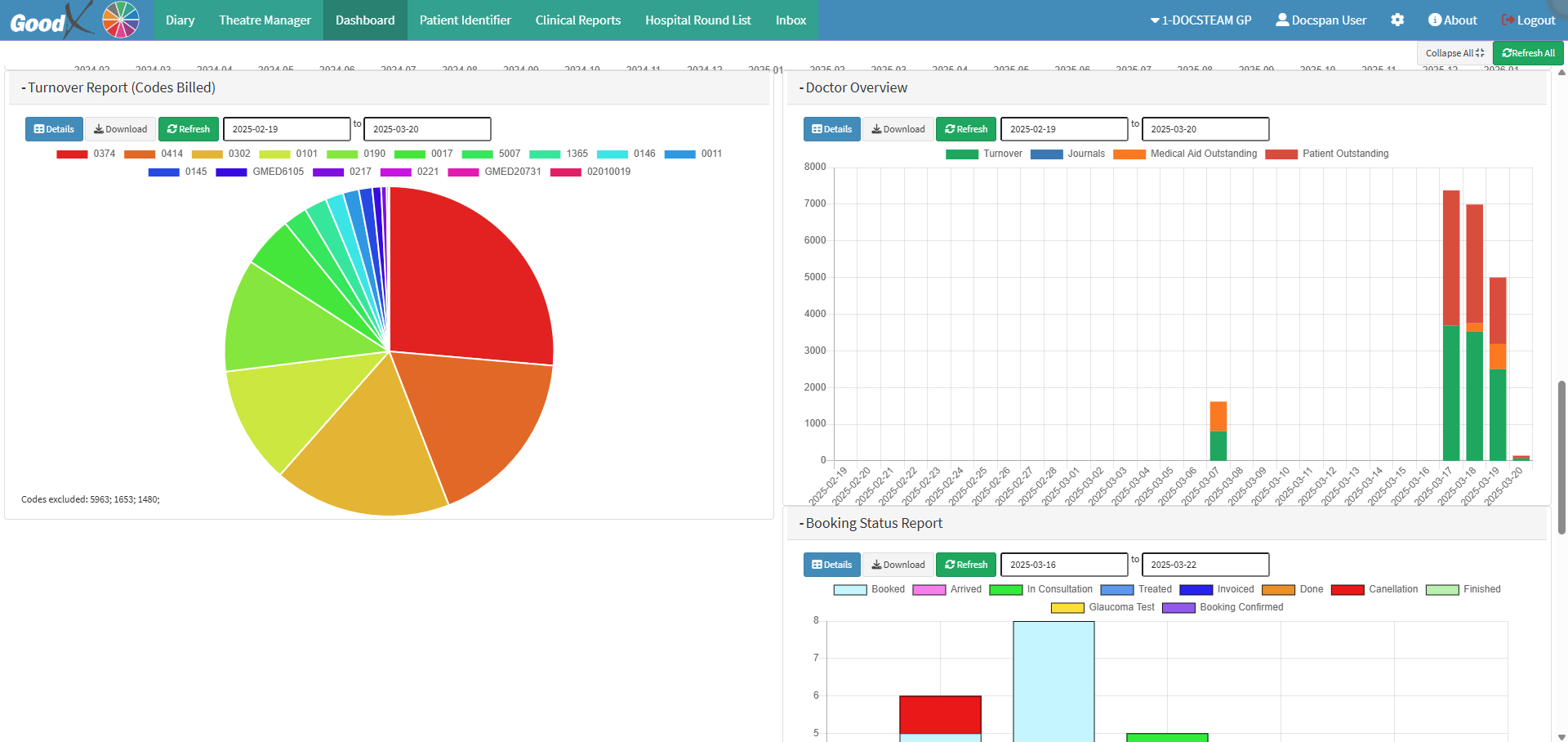
- For an extensive explanation of how the Dashboard works please refer to the user manual: The Dashboard.
Patient Identifier
The Patient Identifier is an easy way to confirm that the Patient is who they say they are. The Patient must be an existing Debtor with a photo that has been loaded on their file, in order for the system to detect their facial features.- Click on the Patient Identifier tab.
- The Patient Identifier screen will open.
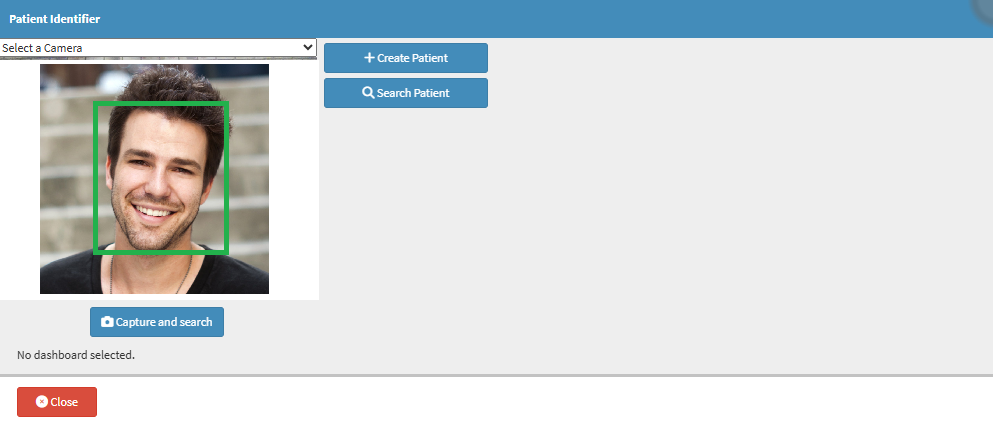
- For an extensive explanation of how the Patient Identifier works please refer to the user manual: How to use the Patient Identifier.
Clinical Reports
The Clinical Report Pathology Interface provides access to pathology reports, Chronic Script Expiry, and task management in one screen. It includes four sub-tabs: Pathology Reports, Chronic Script Expiry, Smart Stickers, and Task Management. Users can send SMSs and emails, contact the Patient, or edit and view reports, streamlining workflow and improving efficiency.- Click on the Clinical Reports tab.
- The Clinical Reports screen will open.
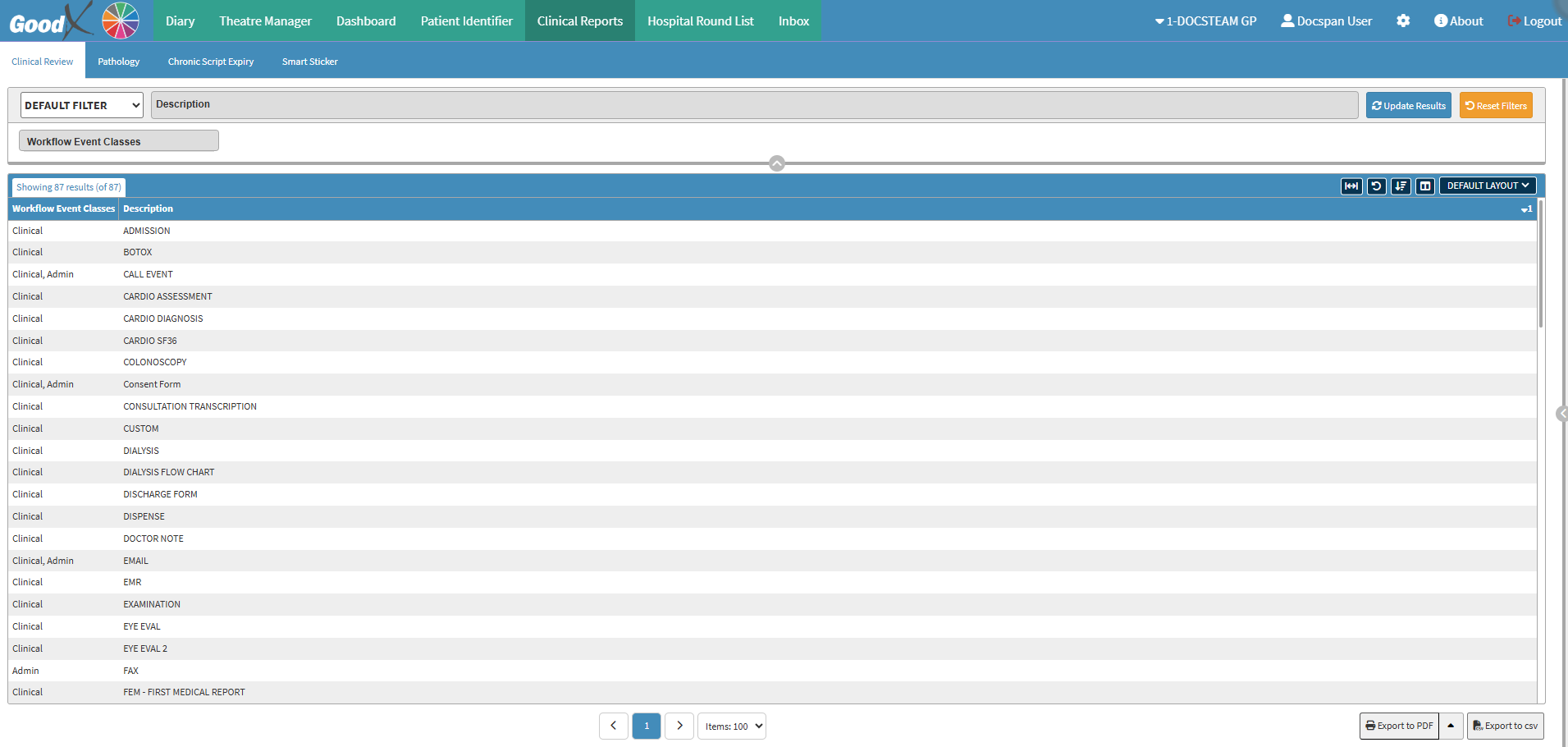
- For an extensive explanation of how the Clinical Reports work, please refer to the user manual: Clinical Reports.
Hospital Round Management
Allows a Practitioner to manage their Patients that have been admitted to the Hospital. Practitioners are able to use the information that has been captured to compile a report, with all the information that has been accumulated during the Patients' stay in the hospital.
- Click on the Hospital Round Management tab.
- The Hospital Round Management screen will open.

- For an extensive explanation of how the Hospital Round Management works, please refer to the user manual: Hospital Rounds List Screen - Navigation and Use.
Inbox
The Inbox Screen manages Incoming and Outgoing Communications, allowing you to link chats to contacts, filter messages, and update connections. It also provides quick access to Contact and Account Details and the Patient’s Clinical History for efficient communication.- Click on the Inbox tab.
![]()
- The Inbox screen will open.
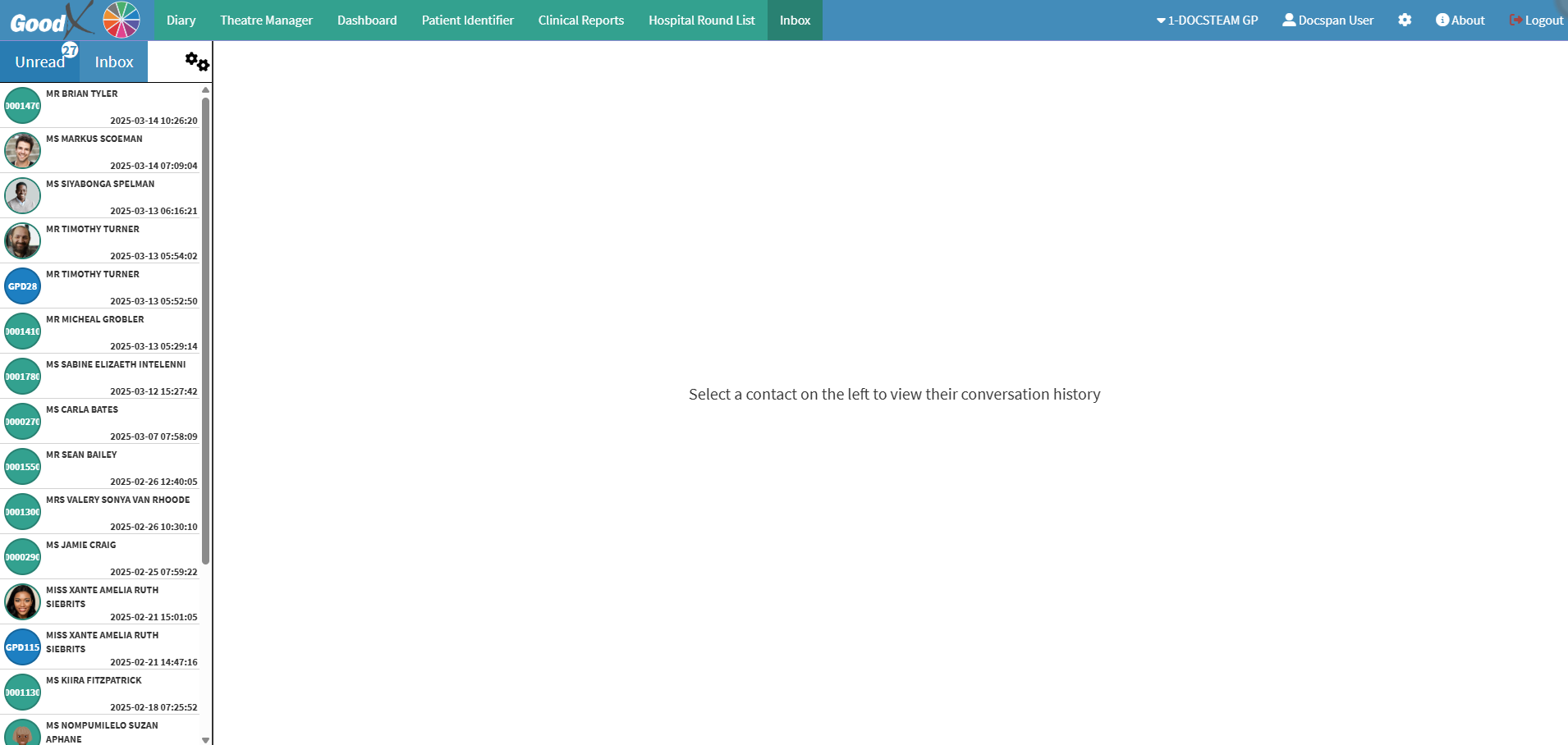
- For an extensive explanation of how the Inbox works, please refer to the user manual: Inbox Screen: Navigation and Use.
Last modified: Wednesday, 19 March 2025, 11:41 AM